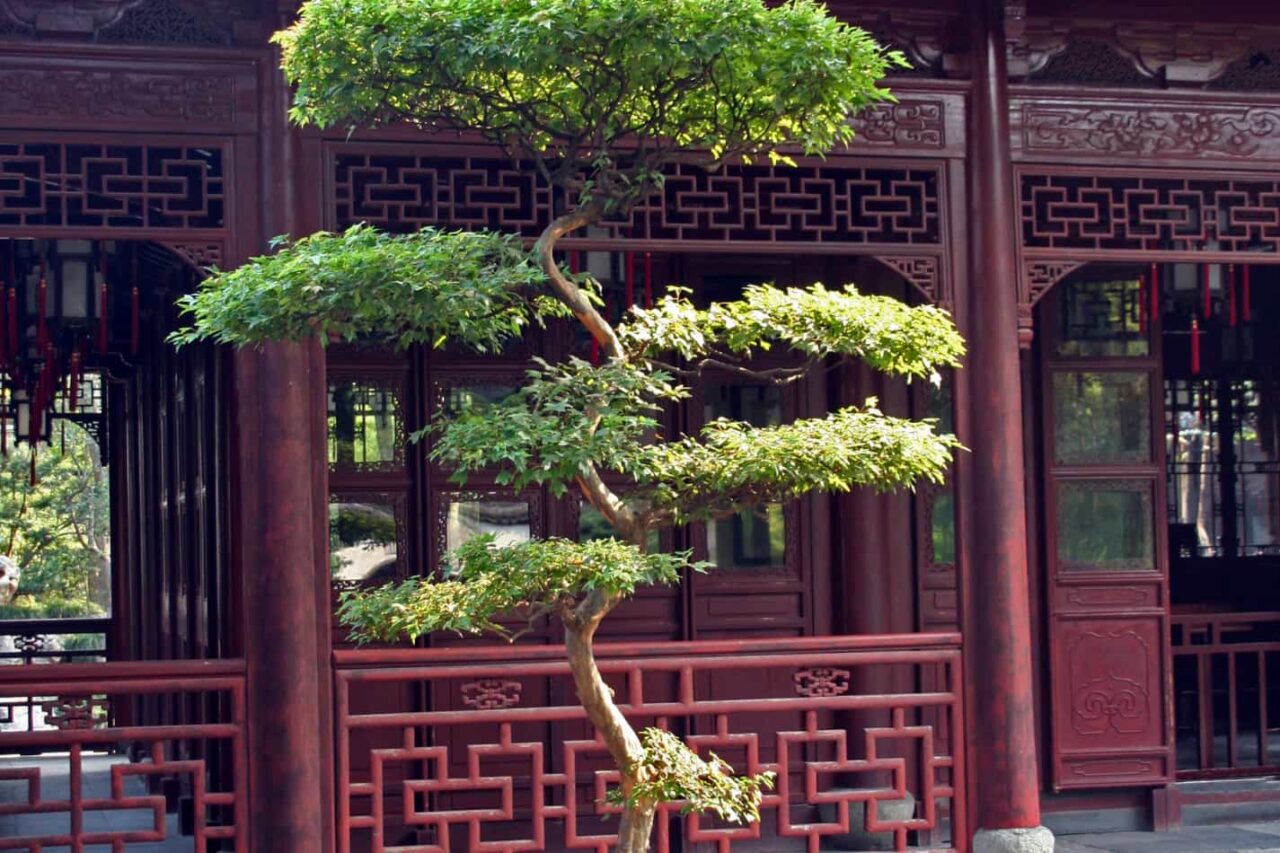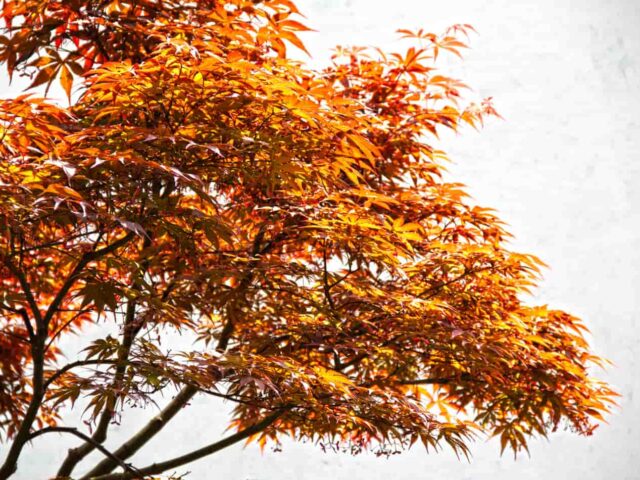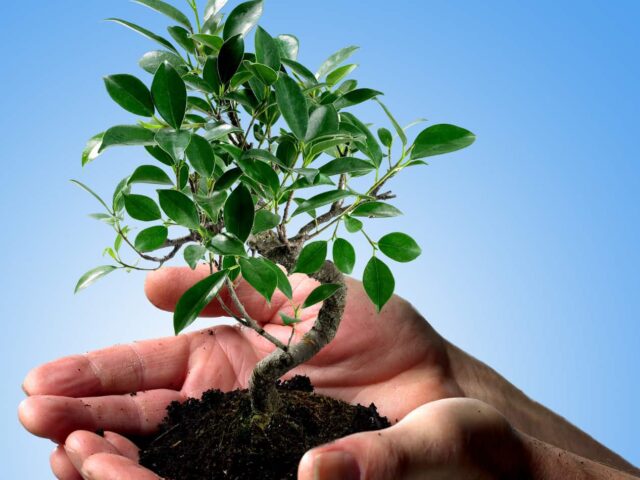When you think of a bonsai tree, most of us will picture a small tree in our minds. However, bonsai trees come in a wide array of sizes. While the most miniature bonsai can be as small as a seed, the largest may also take several people to move. If you are new to the art of growing bonsai trees, the question of how big do bonsai trees get may pop into your mind.
The size of a bonsai tree can vary according to the gardener’s wants and tastes. It can grow up to be as large as 60 to 80 inches. If the gardener wants, it can also be cultivated as small as 1 to 3 inches. Simply put, it depends on the gardener to decide how big the bonsai tree should grow.
When you are new to the fascinating bonsai world, it’s common to wonder exactly what size your bonsai should be. Although no hard and fast rules exist to classify bonsai by size, some traditions are common to the bonsai community. The rest of the article will explore different bonsai tree sizes.

An Introduction To Bonsai Sizes
Initially, the basis for the classification system for bonsai trees was how many hands were needed to move a tree. People would classify the trees as one-handed, two-handed, four-handed, or so on.
However, the names and sizes of the size classifications have changed over the years. The three main categories of bonsai tree size are miniature, medium, and large.
Each of these classifications has subcategories of size, with different measurements and hands needed. This guide to bonsai size can give you an idea of which size classification your bonsai tree falls under.
Miniature Sized Bonsai Trees
The most common miniature bonsai tree subcategories are:
- Kenshitsubo Bonsai: Kenshitsubo bonsai are the most miniature variety of bonsai trees possible. Bonsai trees of this size are known as poppy seed-sized trees as well. These trees rarely grow more than 1-3 inches in height. Like a seed, these bonsai trees can be easily lifted with two fingers.
- Shito Bonsai: Popularly known as the “Fingertip Size,” Shito Bonsai is the most common small-sized bonsai available. These trees are generally between 2-4 inches in height. These bonsai trees are often grown in pots as small as a thimble. This size of bonsai tree is also known as the thimble bonsai.
- Mame Bonsai: This variety of bonsai trees can grow up to 4-8 inches tall. They are also known as one-handed trees because it takes only one hand to move them. More often than not, these trees will be in bigger pots than the Shohin variety.
- Shohin Bonsai: The Shohin Bonsai tree classification may overlap with other ones. So it can be quite challenging to define this classification. These bonsai trees often grow between 5-8 inches in height. Since you can fit these trees in the palm of your hand, many call them “palm bonsai.”
- Komono Bonsai: The Komono Bonsai, or “Generic Small Bonsai Tree”, typically grows between 6-10 inches in height. Among the trees that you can move with a single hand, these are the largest trees.
Medium-Sized Bonsai Trees
The most common medium bonsai tree subcategories are:
- Katade-Mochi Bonsai: The Katade-Mochi Bonsai trees typically grow between 10-18 inches. You can lift These largest-sized Bonsai trees with a single hand. The Katade-Mochi Bonsai trees are the easiest to handle and one of the most popular sizes.
- Chumono or Chiu Bonsai: Over the years, the Chumono and Chiu Bonsai tree sizes have become almost symmetrical. These Bonsai trees need two hands when moving and can grow between 16-36 inches tall. Nowadays, people use these two sizes interchangeably.
Large Sized Bonsai Trees
The most common large Bonsai tree subcategories are:
- Omono or Dai Bonsai: Omono and Dai Bonsai sizes now share similar size definitions. These trees can grow up to be anywhere between 30-48 inches tall. These bonsai trees are the smallest among large-sized bonsai trees that need four hands to carry them.
- Hachi-Uye Bonsai: At a glance, the Hachi-Uye Bonsai trees can seem quite large. These trees would require at least six hands to move it with its pot. They can grow up to be 40-60 inches in height.
- Imperial Bonsai: The largest and most majestic of all varieties of Bonsai trees is the Imperial Bonsai. These trees can grow up to be 60-80 inches in height. Typically, you can find imperial-sized Bonsai trees in Japanese imperial gardens. This size of Bonsai tree requires at least eight hands during the moving process.
Can A Bonsai Tree Grow Big?
The art of growing bonsai is to make a young tree have an appearance similar to that of a fully grown tree but at a smaller size. Even if bonsai trees may generally seem small, they can be of different sizes.
If you want to grow your bonsai tree to have a large structure but still retain the bonsai shape, there are different methods you can apply.
Before everything, it’s important to remember that your bonsai won’t look perfect at all times. Since you need to grow out the branches of your tree, you will need to hold off on pruning them for a long time.
Let it grow freely for one or two years. Then you can get ahead with styling the tree. Another way could be to aim for a bigger tree when you are pruning and styling the tree. The idea behind this method is to make the growth process slower while not allowing it to grow wildly.
If you plan to start a Bonsai tree from a seed or a sapling a couple of years old, you can grow it in your garden for a few years. Once the trunks thicken and there’s a lot of branches attached to the tree, you can cut it to your desired size.
Then you can get ready to shape the tree into a bonsai. No matter what, nurturing a Bonsai tree will involve a lot of patience.
Techniques Used To Keep A Bonsai Small
If you want your bonsai tree to maintain a smaller size, you will need to get a hold of some techniques.
Depending on the size you desire and the type of bonsai tree you are growing, you will need to use these techniques at least once a year.
They are:
- Root Pruning: You can use root pruning to reduce the speed of your tree’s growth. By regularly pruning the roots of your tree, you can get a desirable nice and compact growth and even add lots of details to it.
- Branch Pruning: One of the most effective techniques used to make a Bonsai smaller in size is branch pruning. With enough experience, you will develop a sense as to which branches you should remove and where you should cut them. This technique aims to remove any unwanted branches and direct new and healthy growth.
Conclusion
What makes bonsai trees so unique and interesting to many might be the sizing. So when you start growing a bonsai tree, it’s natural to wonder how big do bonsai trees get.
In this article, I have covered the topics of different bonsai tree sizes and different ways to make them big or small.
I hope the article has helped to answer all your questions. Thank you for reading this far.






